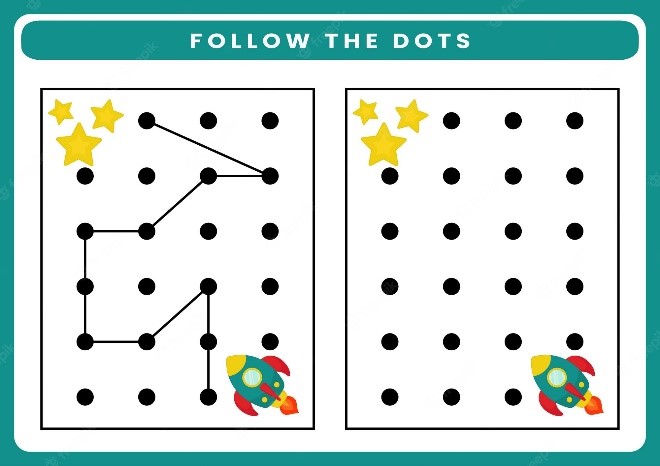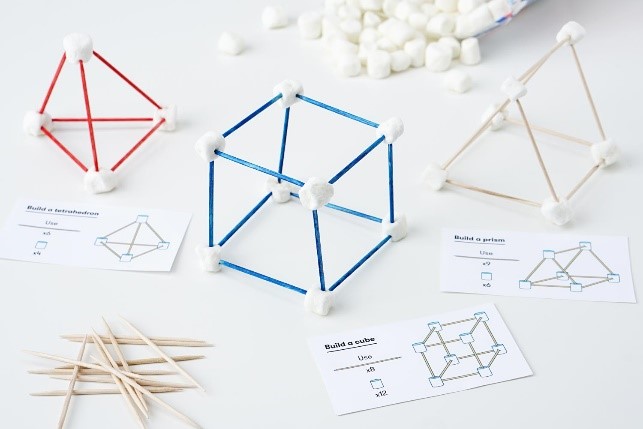

Introduction
In many African countries, there may be children who never attended pre-primary and who never were familiarised with books and print concepts. They may have heard traditional stories, but were not exposed to printed books. As these children may also be used to mostly short admonishments or instructions rather than explanations for why something has to be done in a certain way, their ability to focus on explanations or instruction used in a formal school setting will be difficult. For these children a special preparatory programme or structured exposure is needed to bring them on par with fellow classmates who have been exposed to books and print concepts and oral dialogues.
In addition, in many cases in Africa, parents cannot afford hearing aids or glasses for their children. The teachers have to do the best they can to support all children in learning.
The link between Perceptual Development and Literacy Development
If a child has visual or auditory problems, it will be a challenge to see the letters clearly or hear the sound the letter makes. Phonological and Phonemic awareness are dependent on these skills. The child does not realise that he/she cannot see well or hear well and will just fall behind regarding reading skill development.
There may also be a delay in communication skills. Unless a teacher does some generalised layman tests to determine whether children may have perceptual challenges, it may go unnoticed, especially in rural African areas.
LAYMANS TEST for perceived visual problems. (Layman: non specialist)
LAYMANS TEST for perceived auditory problems.
Visual Perception and eye muscle development
The visual perception of children who are unacquainted with print needs to be developed for them to later be able to realise how a d 9 g b p differ for instance. The child’s small muscles, such as eye muscles need to be exercised as well to cope with the left to right eye movement when reading.
The information below is intended to support these early literacy skills for children who may need it for optimal potential development.
Activities to enhance and develop underdeveloped visual perceptual skills can include:
For fine eye muscle development:
Follow the movement of a swinging ball without moving the head
Jump up and down while keeping eyes fixed on an object
Run around while keeping the eyes fixed on an object
Move, e.g. a toy car left to right while keeping the eyes on the car without moving the head.
Name pictures positioned in rows from left to right, top to bottom of page while keeping the head still
Write imaginary patterns with the eyes –eye movements
Draw imaginary pictures with the eyes- eye movements
Auditory Perception and oral language development
The phonemes need to be identified by hearing them. But first auditory perception needs to be developed as well.
Activities can include
Literacy related basic vocabulary
Just as in mathematics, certain conceptual vocabulary is needed to understand instructions, e.g. top of the page, bottom of the page, left side, right side, below, above, interpreting pictures, page number, space between words, full stop *period*, front, back, upright, upside down.
Spatial Orientation
Learners need to identify where an object is in relation to others. This skill makes it easier to see the difference between a, d, b, and a p for instance. In the d the circle is bottom left and in the p the circle is top right.
Activities can include


The bird flies to the tree.
A frog jumps to the pond
A girl walks to her house
A dog chases a cat.
Language and vocabulary development in the language of reading instruction
Reading takes place when the reader understands what he or she is reading.
For this to happen the learners needs to be familiarised with the language that is used as the medium of instruction, especially if it is not the home languague of the child.
Activities can include
Concepts of print:
Activities can include
Eye-hand co-ordination
Activities can include
Throw and catch a ball
Throw a ball or other object into a basket from different distances
Make objects from clay
Follow a curving line with the finger
Draw pictures or patterns in the sand
Cut out shapes with a pair of scissors
Draw pictures
Writing patterns and fine hand muscle development
Activities can include
Make clay figures
Fasten buttons
Lace shoes
Cut out shapes with a pair of scissors
Paste pictures
Build with Lego blocks
Learn to draw letter related writing patters with thick crayons in wide folded lines
WWWWWWWWWWWWWWW e.g. etc.
Copy their name from an example
Hold a pencil or crayon with the correct grip
Have a good sitting posture when writing or drawing
Page through a book without licking a finger tip
What to do with a child who has hearing or visual challenges and the parents cannot afford hearing aids or glasses.
Supporting a child with hearing problems in a classroom involves creating an inclusive and accessible learning environment, such as the following:
1. Use visual aid: Incorporate visual aids, such as charts, diagrams, and images, to reinforce verbal instructions. This helps children with hearing impairment by providing additional context.
2. Provide written instructions: Supplement oral instructions with written instructions, either on the board or handouts. This ensures that the child can refer to the information visually.
3. Face the class when speaking: When talking to the class, make sure you are facing the students. This allows the child with hearing problems to better lip-read and pick up visual cues.
4. Use assistive technology: Explore the use of assistive listening devices to enhance the child’s ability to hear you clearly. These systems transmit sound directly to the child’s hearing aids.
5. Seat the child appropriately: Place the child in a strategic location in the classroom where they can easily see and hear you. Avoid placing them near noisy distractions or in areas with poor acoustics.
6. Foster a supportive and open communication environment: Encourage the child to let you know if they are having difficulty hearing or understanding, and be willing to adapt accordingly.
7. Caption/ subtitles for videos: If you use videos as part of your teaching materials, ensure that they are captioned. This benefits not only the child with hearing problems but also other students who may benefit from visual reinforcement.
8. Provide Peer Support: Assign a peer buddy to assist the child when needed, such as providing notes or clarifying information. This promotes inclusivity and helps the child feel more connected.
9. Implement a Signal System: Establish a non-disruptive signal system to get the child’s attention or convey information without verbal communication. This could be a visual cue, a gentle tap, or a written note. Or a way for the child to let you know they are not following.
10. Be open to adjust your teaching strategies: Understand that each child with hearing problems may have different needs. Stay patient, be flexible base on the child’s feedback and progress.
Supporting a child with visual challenges in the classroom involves creating a learning environment that accommodates their needs. See the following guidelines:
1. Give instructions verbally as well as in writing in a clear concise manner.
2. Help visually challenged learners by using descriptive language to help them from a mental image.
3. Include tactile materials and hands-on activities to engage the child by allowing them to explore and understand concepts.
4. Keep the classroom layout the same and avoid obstacles to help the child navigate independently.
5. All labels or word cards should be written in large bold clear letters in highly contrasting manner.
6. Use assistive technology e.g., print that can be enlarged on the screen.
7. Seat the child in an optimal place to see the teacher and visual aids best.
8. Provide peer support, e.g., reading aloud or providing additional descriptions.
9. Engage educational specialists for children with perceptual challenges.
Resources
Banai, K., & Yifat, R. (2011). Perceptual anchoring in Preschool Children: Not Adultlike, but There. PLoS ONE 6(5). Retrieved from https://doi.org/10.1371/journal.pone.0019769
De Witt, M. (2017). The young child in context. A psycho-social perspective. sec ed. Pretoria: Van Schaik Publishers.
Van Zyl, E. (2004). The relation between perceptual development (as part of school readiness) and school success of grade 1 learners. Africa Education Review 1 (1), 147 159. doi:10.1080/18146620408566275